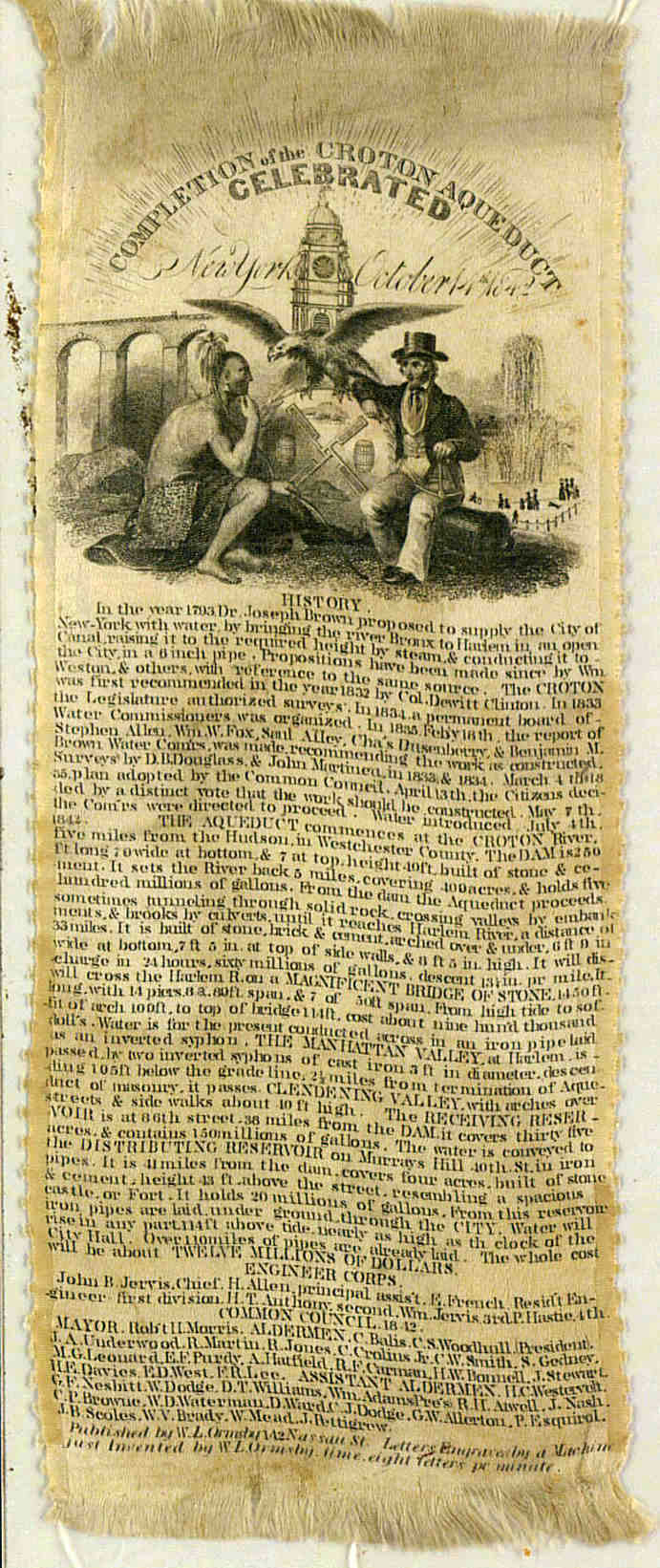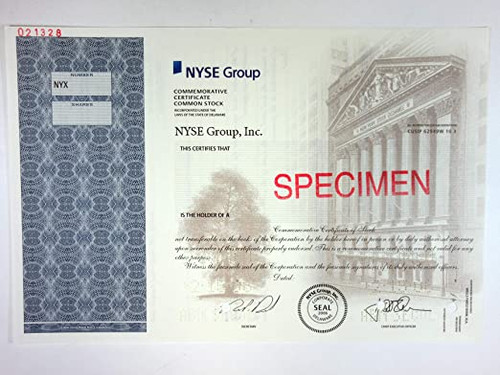Historically important document (Payment Receipt) from the Water Commissioners of the City of New York signed in 1839. This early document was issued to confirm payment for work performed on the Croton Aqueduct. Signed by D. Wells of Wells & Harrington. Over 184 years old.

Westchester County Historical Society has the above Croton Aqueduct Souvenir dated 1842 celebrating the dam completion - Shown for illustrative purposes
The Croton Aqueduct was a large, complicated water system that was engineered between 1837 and 1842 to provide New York City with a steady supply of clean water. Before the aqueduct system, New Yorkers got their water from cisterns, wells, natural springs, and other bodies of water. But the rapid population growth that took place during the nineteenth century was accompanied by a number of terrifying fires that destroyed large parts of the city, whose buildings were mainly made of wood. There was also an increased demand for water for use in industry. To make matters worse, the existing water supply had become polluted and unsanitary, and contributed to an increase in disease and such epidemics as cholera and yellow fever. As a result, the city badly needed a fresh supply of water. The aqueduct was an intricate engineering project. Iron pipe encased in brick masonry was laid from the Croton Dam in northern Westchester County. It traveled over the High Bridge (the oldest of New York's great bridges at the time) that spanned the Harlem River at 173rd Street. It then went down the west side of Manhattan and into the Receiving Reservoir, located in the area then known as "Yorkville," between 79th and 86th streets and Sixth and Seventh Avenues. The Receiving Reservoir looked like a huge rectangular fortress. Water flowed from the Receiving Reservoir to the Distributing Reservoir (also known as the Croton Reservoir), a similar fortification located on the site of what is now the New York Public Library at Fifth Avenue between 40th and 42nd streets. Clean water was distributed from there to homesand businesses in the lower parts of the city. The Receiving Reservoir was 1,826 feet long and 836 feet wide, and held up to 180 million gallons of water. Thirty-five million gallons flowed into it daily. The land on which the reservoir was built had been owned by the city and by two private citizens. The Aqueduct opened to great fanfare on October 14, 1842. The celebration culminated in a fountain of water that spouted to a height of fifty feet from the beautifully decorated Croton Fountain in City Hall Park. Joining in the festivities were President Tyler, former presidents John Quincy Adams and Martin van Buren, Governor William Seward, city officials, representatives from civic organizations and dignitaries from neighboring states. The Croton Reservoir continued to supply New York City with drinking water until 1940, when Commissioner of Parks and Recreation Robert Moses ordered it drained and filled to create the Great Lawn in Central Park. History from the New York Historical Society.








